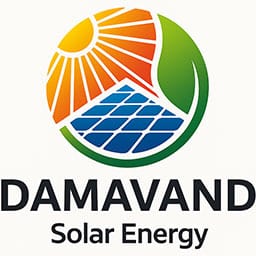Introduction:
The dream of energy independence and sustainable electricity supply for the villa has become an accessible reality with off-grid solar systems. But the first and most important question that arises for every enthusiast of this technology is: “Which system is right for me and how much does it cost?” The answer to this question requires a precise and engineered calculation.
At Damavand Solar Company , we believe that transparency and awareness are the first step to a smart investment. That’s why we’ve created this comprehensive guide to show you how to calculate your home’s electricity consumption and get a realistic estimate of the costs of your solar system. Join us as we walk you through the process step by step.
Part 1: The cornerstone of your system – accurate calculation of consumption (electrical load)
The most accurate cost estimate starts with the most accurate consumption calculation. The more detailed you are in this step, the more efficient and economical the system that is designed for you will be.
Step 1: Prepare a complete list of electrical appliances
Grab a pen and paper (or open an Excel file) and make a list of all the electrical appliances in your villa that you plan to power with solar power. Don’t leave out any appliances, from the largest (refrigerator, water pump) to the smallest (mobile charger).
Step 2: Find the power consumption of each device (Watts)
Now, next to the name of each device, write its power consumption in “watts” (W). This number can usually be found on a label on the back or bottom of the device, in the manual, or with a simple internet search for the device model.
Example of power consumption of some common devices:
- Each LED bulb: 7 to 15 watts
- LED TV: 50 to 150 watts
- Fridge/freezer (depending on energy class): 100 to 250 watts (Note: the fridge operates intermittently)
- Mobile/Laptop Charger: 20 to 65 watts
- Half horsepower water pump: about 375 watts
- Ceiling fan: 50 to 80 watts
Step 3: Estimate daily usage hours
This step is crucial. For each device, estimate how many hours you will use it in a 24-hour period. Be realistic.
- For permanent appliances: A refrigerator that is always plugged in runs on average about 8 hours a day (its compressor is on).
- For appliances: Maybe you have 5 lights, each on for 4 hours a night. The TV is on for 3 hours, the water pump is on for a total of 1 hour, etc.
Step 4: Calculate total daily consumption (watt-hours – Wh)
Now, for each device, multiply the power consumption (watts) by the hours of daily use (hours) to get its “watt-hours” (Wh) consumption.
Part Two: Converting Calculations into Equipment and Cost Estimating
Now that we know how much energy we need, we can identify the main components of the system and estimate their cost. The final cost of an off-grid solar system mainly consists of 4 parts:
- Batteries
- Solar panels
- Inverter and charge controller
- Structure, cabling and installation costs
۱. Calculating the capacity and cost of batteries
Batteries store energy generated during the day for use at night and on cloudy days. Their capacity is calculated based on the “Total Daily Consumption” and the “Number of Days of Autonomy” you want the system to last in cloudy weather (usually 1 to 3 days).
- Why is battery cost important? In off-grid systems, batteries are typically the most expensive part of the system (around 30% to 40% of the total cost) .
- Damavand Solar Tip: At Damavand Solar , we guarantee the useful life and efficiency of your battery bank by using deep cycle gel or lithium batteries. Choosing the right battery is the most critical decision in an Off-Grid system.
۲. Calculating the number and cost of solar panels
The number of panels should be enough to produce your entire daily consumption and fully charge the batteries on a sunny day. This calculation depends on the “peak hours of sunlight” in your area (in Iran, it is considered an average of 4 to 5 hours).
- Damavand Solar Tip: By using high-efficiency monocrystalline panels , we ensure that you produce the most electricity while occupying the least space.
۳. Inverter and charge controller selection and cost
- Inverter: Converts the battery’s DC power into 220V AC for your appliances. The inverter’s power must be greater than the total simultaneous power of the appliances you are turning on. It must also be able to handle the initial starting current of motorized appliances (such as pumps and refrigerators).
- Charge controller: It is responsible for protecting batteries from overcharging and overdischarging. Choosing a quality MPPT charge controller will increase the overall efficiency of your system by up to 30%.
- Cost: These two pieces together account for about ۱۵% to 25% of the total cost.
۴. Cost of structure, cabling and installation
This section is often overlooked but is essential for the long-term safety and efficiency of the system.
- Structure: Galvanized metal supports that hold the panels securely to the roof or ground at the correct angle.
- Cables and connections: Using special solar DC cables, MC4 connectors, fuses, and electrical panels is essential to ensure safety and minimal energy loss.
- Installation cost: The fee for the expert team to properly and systematically install all equipment.
- Cost estimate: This section can account for about ۱۵% to 20% of the total project cost.
Conclusion: From Calculation to Reality with Damavand Solar
As you can see, designing an off-grid solar system is a meticulous engineering process. The load calculation table gives you a great overview, but turning it into an optimized and reliable system requires expertise.
Why leave the final calculations to us?
- Accuracy: We consider parameters such as ambient temperature, cable length, system losses, and precise equipment specifications in the final calculations.
- Cost optimization: With complete knowledge of the market and equipment, we offer you a combination that provides the best performance at the most appropriate cost.
- Peace of mind: Designing and implementing the system by Damavand Solar specialists means a guarantee of performance, safety, and long-term support.
Are you ready to take the first step?
Prepare your electrical appliance list according to this guide and contact our experts at Solar Damavand for a free consultation and accurate cost estimate . We will make your dream of an always-lit villa a reality


